How to Check Your Roof After a Major Monsoon Storm
Living in Arizona means having to deal with the monsoon season, which will bring in a lot of storms. Many of these storms can be heavy, causing significant damage to your home and surrounding areas. Yes, that includes your strong roof, which keeps you dry and protected from all types of weather!
Because of that, it’s vital to learn how to check your roof after a major monsoon storm. That way, you can determine whether repairs are necessary or further inspections by a professional roofer so small problems don’t grow later on.
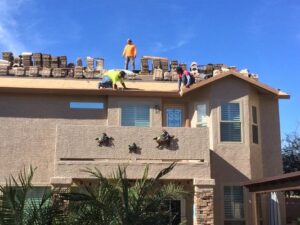
The Damage Monsoon Can Cause to Roofs
Storms, especially those with heavy winds, can cause significant damage to roofs. This includes dust storms, which are common during the monsoon season in Arizona cities.
That’s because intense winds can cause branches and other debris to fall on your home. Moreover, it can cause loose shingles to fly away, thus exposing the roof to rain and debris. Both situations can damage your roof over time.
The heavy rains don’t help either. The sustained exposure to rain can wear down shingles. Moreover, water may seep underneath the roof, causing wood rot in the deck.
Hail is less common in Arizona but if they do happen, it can also cause significant roof damage, particularly on your shingles!
Such roof damage won’t only cause high repair fees if left untreated. It can also make your home less comfortable to live in. No one wants to live somewhere with poor insulation, wet walls, or leaking roofs!
After bad weather passes, you must check your roof to be on the safe side and ensure your roof is still in good condition. And if not, you will know it’s time to call a professional to fix any issues before they become even bigger and more problematic.
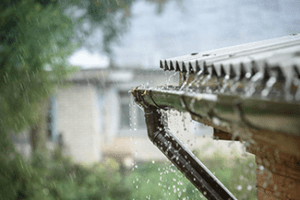
How to Check Your Roof After a Major Monsoon Storm
With all that said above, be sure to check your roof after a major monsoon storm, following these tips:
Start with the Obvious
Major roof damage will be obvious to the naked eye, and you might not even need to go up to your roof for an inspection to see it.
Walk outside your home and check the roof for any missing tiles or shingles. You may even see tiles or shingles hanging on by a corner or on the ground. Check if there are holes in your roof or branches on top of it.
It’s crucial to check the shingles as they are the first line of defense against harsh elements. If any shingles have disappeared or become damaged from the storm, they must be repaired or replaced ASAP!
If you see such signs, it’s best to call a roofer immediately for emergency repairs or temporary protective measures. You never know if another storm will come within the next few days, resulting in leaks and other nasty issues at home.
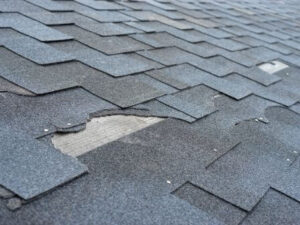
Look in the Attic
Smaller roof damage won’t be as apparent, especially not right after storms. However, once you get into the habit of inspecting the roof and property for signs of damage, you’ll be able to spot signs of minor and unnoticeable damage better.
For instance, your roof may have incurred minor damage that lets water in slowly. You might not notice the issue until weeks after the storm when enough water has penetrated your home. This can cause brown spots on the walls or ceiling, requiring professionals to fix them.
To avoid that from happening, check the attic! Look around for any signs of damage by shining a flashlight on the ceiling and beams. Watch out for any obvious leaks and water, or at least signs of it, like milder and dark spots. Moreover, inspect the attic by checking for small holes in the roof.
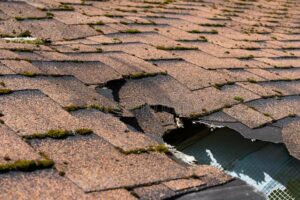
Watch Out for Signs
There are other signs to watch out for that can indicate severe roof damage, including:
- Clogged or damaged gutters: Gutters are a clear indicator of your roof’s overall health. After monsoon storms, the gutters may loosen up or become filled with debris, leaves, and sticks. This causes poor water drainage.
- Leaks: Some roofs are prone to leaks after storms, which can cause water to pool on the roof. This causes issues in both your roof and your home’s interiors!
- Damage from trees: Monsoon storm damage will extend to any trees you have on the property. Winds can knock branches and other debris over, striking the roof. If you see branches on the roof or heard a loud crash on the roof during the storm, this will require hiring someone to inspect the roof and remove the dead trees from the yard.
Hire a Professional Roofer
Even with all those tips, there are many other ways a roof may incur damage after a monsoon that isn’t visible to the naked eye. Many times, only trained professionals will be able to discover the damage and how to fix it appropriately.
If you aren’t confident with your roof inspection, do hire a reputable roofer to perform it. Furthermore, hire a roofer in case you do find any signs of roof damage after the monsoon storm, regardless of how small you think it is.
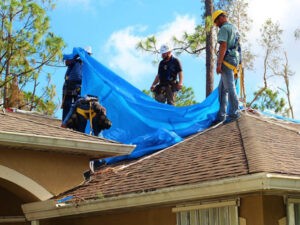
Wrapping It Up
Monsoon season can incur a lot of damage to your roof, resulting in hefty repair fees if left ignored. That’s why you must check your roof after a major monsoon storm or hire a professional to do so. Fortunately, roof inspections after storms aren’t as difficult as you think!
Hopefully, this article on how to check your roof after a major monsoon storm helped you out. Now that you know what to do, make sure you’re prepared for the next storm! If you need to have your roof inspected, repaired, or replaced due to intense weather conditions or old age, be sure to contact us now for our services.
